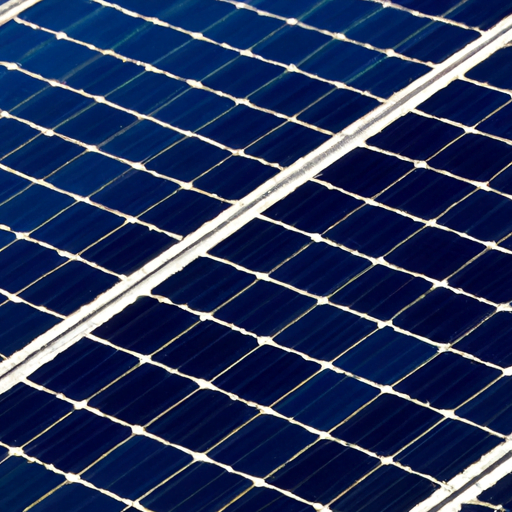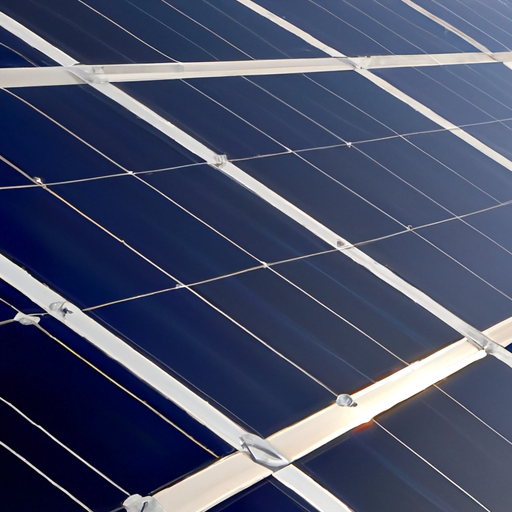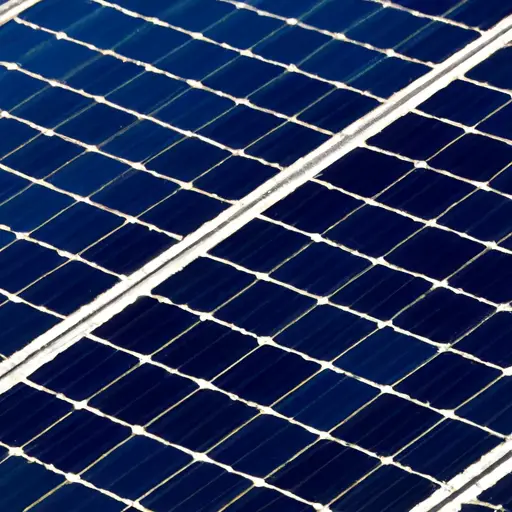Have you ever wondered if solar panels can stop working in high temperatures? It’s a common concern, especially for those living in hot climates. After all, solar panels are designed to harness the power of the sun, so it’s natural to wonder if intense heat can actually have a negative impact on their performance. In this article, we’ll delve into this topic in more detail and shed some light on whether or not solar panels can be affected by high temperatures.
When it comes to living off the grid, solar panels are a popular choice for many. They provide a renewable and sustainable source of energy, allowing you to generate your own electricity and reduce your reliance on traditional power sources. However, if you live in an area where temperatures can soar, you might be worried about the efficiency and longevity of your solar panels. So, can solar panels stop working if they get too hot?
The answer is, it’s unlikely. Solar panels are designed to withstand a wide range of temperatures, including high temperatures. In fact, they often have a built-in system to dissipate heat and prevent damage. However, extreme heat can decrease the efficiency of solar panels, resulting in a decrease in energy production. But there are ways to mitigate this, such as installing your panels in a shaded area or using ventilation techniques to keep them cool.
In conclusion, while solar panels can be affected by high temperatures, they are generally designed to withstand such conditions. However, it’s important to take steps to prevent overheating and maximize their efficiency. In the next article, we’ll dig deeper into the measures you can take to ensure optimal performance of your solar panels in hot climates.

The Impact of High Temperature on Solar Panel Performance
Understanding the Relationship between Temperature and Solar Panel Efficiency
Solar panels are designed to convert sunlight into electricity, making them an essential component of any renewable energy system. However, like any other technology, solar panels can be affected by external factors that can impact their performance. One such factor is temperature. While solar panels are often associated with harnessing the power of the sun, high temperatures can actually have a negative impact on their efficiency and effectiveness.
Effects of High Temperatures on Solar Panel Performance
When temperatures rise, solar panels can experience a decline in their overall performance. This is due to the nature of the materials used in their construction. As the temperature increases, the semiconducting material within the solar cells expands, causing the electrical conductivity to decrease. This, in turn, reduces the panels’ ability to convert sunlight into usable electricity.
Impact of Temperature on Maximum Power Output of Solar Panels
One of the key metrics used to measure solar panel performance is the maximum power output. This refers to the amount of electricity that a solar panel can produce under ideal conditions. However, as temperature increases, the maximum power output of solar panels can decrease. In fact, for every 1°C increase in temperature above the standard test condition of 25°C, the maximum power output can decrease by around 0.5%.
Factors Affecting Solar Panel Performance in High Temperatures
Type of Solar Panel Technology
Different types of solar panel technologies have different temperature coefficients. The temperature coefficient is a measure of how much the performance of a solar panel is affected by changes in temperature. Generally, monocrystalline solar panels have a lower temperature coefficient compared to polycrystalline and thin-film solar panels. This means that monocrystalline panels are more efficient at higher temperatures. Therefore, the type of solar panel technology you choose can have a significant impact on its performance in high-temperature conditions.
Module Temperature Coefficient
In addition to the type of solar panel technology, the module temperature coefficient is another important factor to consider. This coefficient represents the percentage change in the maximum power output of a solar panel for every 1°C increase in temperature above 25°C. Ideally, you would want a solar panel with a lower module temperature coefficient, as this means it will maintain a higher percentage of its maximum power output as temperatures rise.
Orientation and Shading
The orientation and shading of solar panels can also play a role in their performance in high temperatures. When solar panels are oriented towards the sun and are not shaded by nearby objects such as trees or buildings, they are able to absorb the maximum amount of sunlight. This allows them to operate more efficiently, even in high-temperature conditions. Proper placement and regular monitoring of shading can help maximize the performance of solar panels in hot climates.
Dust and Dirt Accumulation
Dust and dirt can accumulate on the surface of solar panels over time, especially in dry and arid environments. This accumulation can reduce the amount of sunlight that reaches the solar cells, therefore decreasing their efficiency. Regular cleaning and maintenance of solar panels can help prevent dust and dirt buildup and ensure optimal performance, even in high-temperature conditions.
Preventing Damage and Maximizing Efficiency in High Temperatures
Utilizing Heat Dissipation Methods
To prevent damage and maximize efficiency in high temperatures, various heat dissipation methods can be employed. One such method is the use of heat sinks, which help dissipate excess heat away from the solar panels. Heat sinks are typically made of materials with high thermal conductivity, such as aluminum or copper, and are installed behind the solar panels. They effectively absorb and transfer heat away from the panels, helping to maintain their performance even in hot conditions.
Choosing Solar Panels with Higher Heat Tolerance
Another way to combat the negative effects of high temperatures on solar panel performance is to choose panels with higher heat tolerance. Some manufacturers offer solar panels specifically designed to withstand extreme temperature conditions. These panels are built with materials and components that can function optimally at higher temperatures, allowing them to maintain their efficiency even in scorching climates.
Optimizing Panel Placement and Angles
Proper panel placement and angles can also contribute to improving solar panel performance in high temperatures. By orienting the panels correctly to receive the maximum amount of sunlight and minimize shading, their efficiency can be enhanced. In addition, tilting the panels at an angle that reflects the specific climate and latitude can help reduce the impact of high temperatures on their performance.
Regular Inspection and Maintenance
Regular inspection and maintenance of solar panels are crucial to ensuring their longevity and performance. This includes checking for any signs of physical damage, such as cracks or loose connections, as well as monitoring the cleanliness of the panels. Scheduled maintenance should also include cleaning to remove dust and dirt buildup, as well as checking for any signs of overheating or abnormal temperature fluctuations.

The Role of Inverters in Temperature Regulation
Inverter Efficiency and Its Influence on Temperature
In addition to the solar panels themselves, the efficiency of the inverters used in a solar panel system can also impact temperature regulation. Inverters are responsible for converting the direct current (DC) produced by the solar panels into alternating current (AC), which is used to power household appliances. However, during the conversion process, inverters produce heat. The efficiency of the inverter determines how much heat is generated, which can affect the overall temperature of the solar panel system.
The Need for Temperature Sensing and Regulation in Inverters
To ensure optimal performance and longevity of solar panel systems, many modern inverters are equipped with temperature sensing and regulation mechanisms. These mechanisms monitor the temperature of the inverter and adjust its operation accordingly to maintain the desired temperature range. By regulating the temperature, inverters can help prevent overheating and minimize the impact of high temperatures on the overall efficiency of the solar panel system.
Measuring and Monitoring Solar Panel Health in High Temperatures
Temperature Monitoring Systems
To effectively measure and monitor the health of solar panels in high temperatures, temperature monitoring systems can be employed. These systems utilize sensors that are installed on or near the solar panels, which continuously measure the temperature. The data collected can then be analyzed to identify any temperature-related issues and make necessary adjustments to maintain optimal performance.
Performance Testing and Diagnostics
Performance testing and diagnostics are essential for identifying any potential issues or inefficiencies in a solar panel system, especially in high-temperature conditions. These tests involve measuring the actual power output of the system and comparing it to the expected output. Through performance testing, any deviations can be detected, allowing for timely repairs or adjustments to be made to ensure optimal performance.
Impact of Temperature on Solar Panel Lifespan
High temperatures can also have an impact on the lifespan of solar panels. The expansion and contraction of materials due to temperature fluctuations can lead to the degradation of solar cells and other components over time. This degradation can eventually result in a decrease in overall efficiency and lifespan of the solar panel system. Therefore, proper temperature regulation and regular maintenance are crucial for maximizing the lifespan of solar panels in high-temperature environments.
Heat Tolerance in Various Solar Panel Technologies
Monocrystalline Solar Panels
Monocrystalline solar panels are known for their high heat tolerance and efficiency. The manufacturing process of monocrystalline panels involves using single-crystal silicon, which allows for better heat resistance compared to other panel technologies. This makes monocrystalline panels a suitable choice for areas with high-temperature climates.
Polycrystalline Solar Panels
Polycrystalline solar panels, while slightly less heat tolerant than monocrystalline panels, still offer good performance in high-temperature conditions. These panels are made from multiple silicon crystals and are known for their affordability and durability. With proper heat dissipation methods and maintenance, polycrystalline panels can continue to operate efficiently in hot climates.
Thin-Film Solar Panels
Thin-film solar panels, on the other hand, have a lower heat tolerance compared to crystalline panel technologies. Thin-film panels are made by depositing a thin layer of semiconductor material onto a substrate. While these panels are generally less efficient, they can still be a viable option in moderate-temperature environments where the focus is on maximizing cost-effectiveness rather than overall performance.
Practical Applications and Case Studies
Solar Panel Performance in Desert Environments
One of the most challenging environments for solar panel performance is desert regions, where temperatures can reach extreme levels. However, with proper planning, design, and maintenance, solar panels can still function effectively in these areas. For example, solar panel systems installed in desert environments often utilize advanced heat dissipation techniques, such as air or water cooling systems, to regulate temperature and maximize performance.
Effectiveness of Cooling Systems in High-Temperature Regions
Cooling systems can play a crucial role in improving the performance of solar panel systems in high-temperature regions. These systems use water or air to dissipate heat and keep the panels at a lower temperature. Case studies have shown that in regions with consistently high temperatures, cooling systems can significantly enhance solar panel efficiency, resulting in increased power output and improved overall system performance.
Potential Innovations and Future Prospects
Advancements in Solar Panel Material and Design
As solar panel technology continues to evolve, there are ongoing advancements in materials and design that aim to improve their performance in high-temperature conditions. Researchers are exploring the use of new materials that are more heat-resistant and can withstand extreme temperatures, thereby reducing the impact of heat on solar panel efficiency. Additionally, new designs and manufacturing techniques are being developed to enhance heat dissipation and optimize power output.
Integration of Cooling Technologies in Solar Panel Systems
The integration of cooling technologies directly into solar panel systems is another area of potential innovation. By incorporating water or air cooling mechanisms within the panels themselves, the heat generated during operation can be dissipated more efficiently, thus reducing the impact of high temperatures on solar panel performance. This integration can help overcome the limitations of traditional cooling systems and further enhance the efficiency and longevity of solar panel systems in hot climates.
Impact of Climate Change on Solar Panel Performance
With the ongoing effects of climate change, it is becoming increasingly important to understand the impact of rising temperatures on solar panel performance. As temperatures continue to rise, the efficiency and effectiveness of solar panels in converting sunlight into electricity may be significantly affected. This highlights the need for ongoing research and innovation to develop new technologies and strategies that can mitigate the negative effects of climate change and ensure the long-term viability of solar panel systems.
Conclusion
While solar panels are designed to harness the power of the sun, high temperatures can present challenges to their performance. The relationship between temperature and solar panel efficiency is complex, but understanding the factors that influence performance in high-temperature conditions is crucial. By considering factors such as the type of solar panel technology, heat dissipation methods, proper panel placement, and regular maintenance, the negative impact of high temperatures on solar panel performance can be minimized. Furthermore, advancements in technology and ongoing research pave the way for future innovations and prospects for improving solar panel performance in high-temperature environments. By taking these measures and staying informed about the latest developments, you can ensure that your solar panels continue to operate effectively, even in the hottest conditions.




